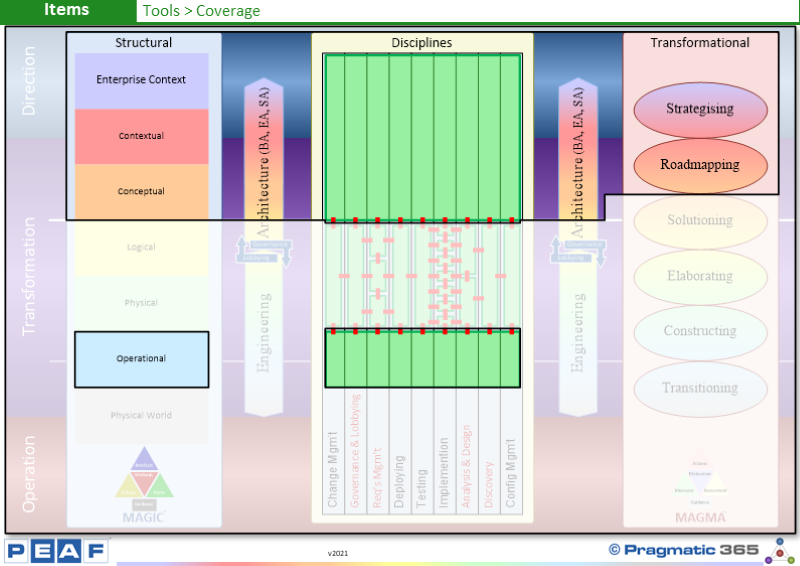
To carry out the work of the EA Capability (Roadmapping)
effectively and efficiency, tools are mandatory.
There are two fundamental domains (types) of information
that any tool needs to be able to work with (Structural and Transformational)
and this information is consumed and produced by various Disciplines.
In general (because of their history and initial focus)
tools operating primarily on Structural information have tended to be called EA
Modelling tools and tools operating primarily on Transformational information
have tended to be called EA Planning Tools. This is not a hard and fast rule
though as many tools describe themselves using various adjectives - itís not
what they call themselves, itís what information they manipulate.
...to read more, please Login or Register